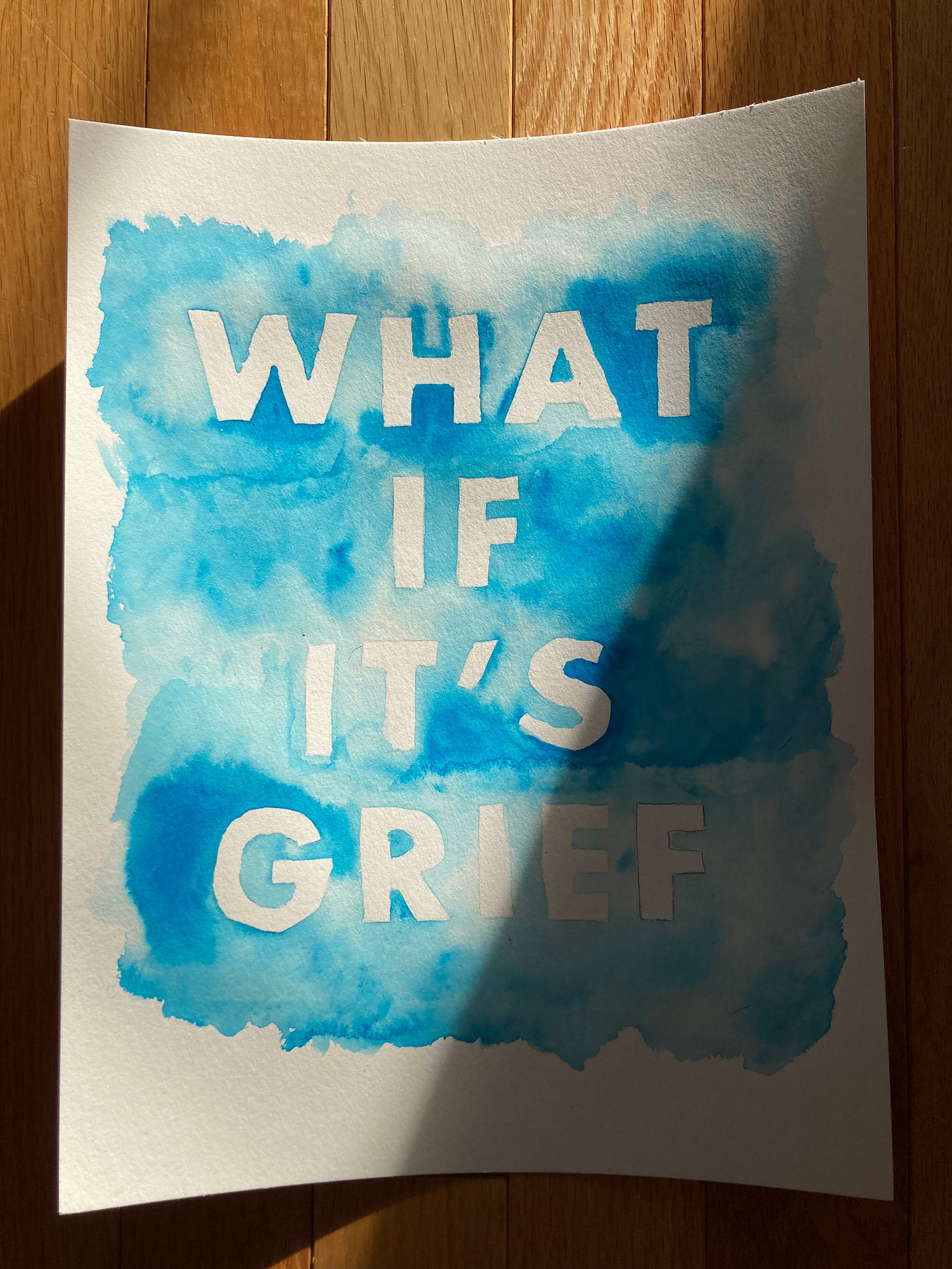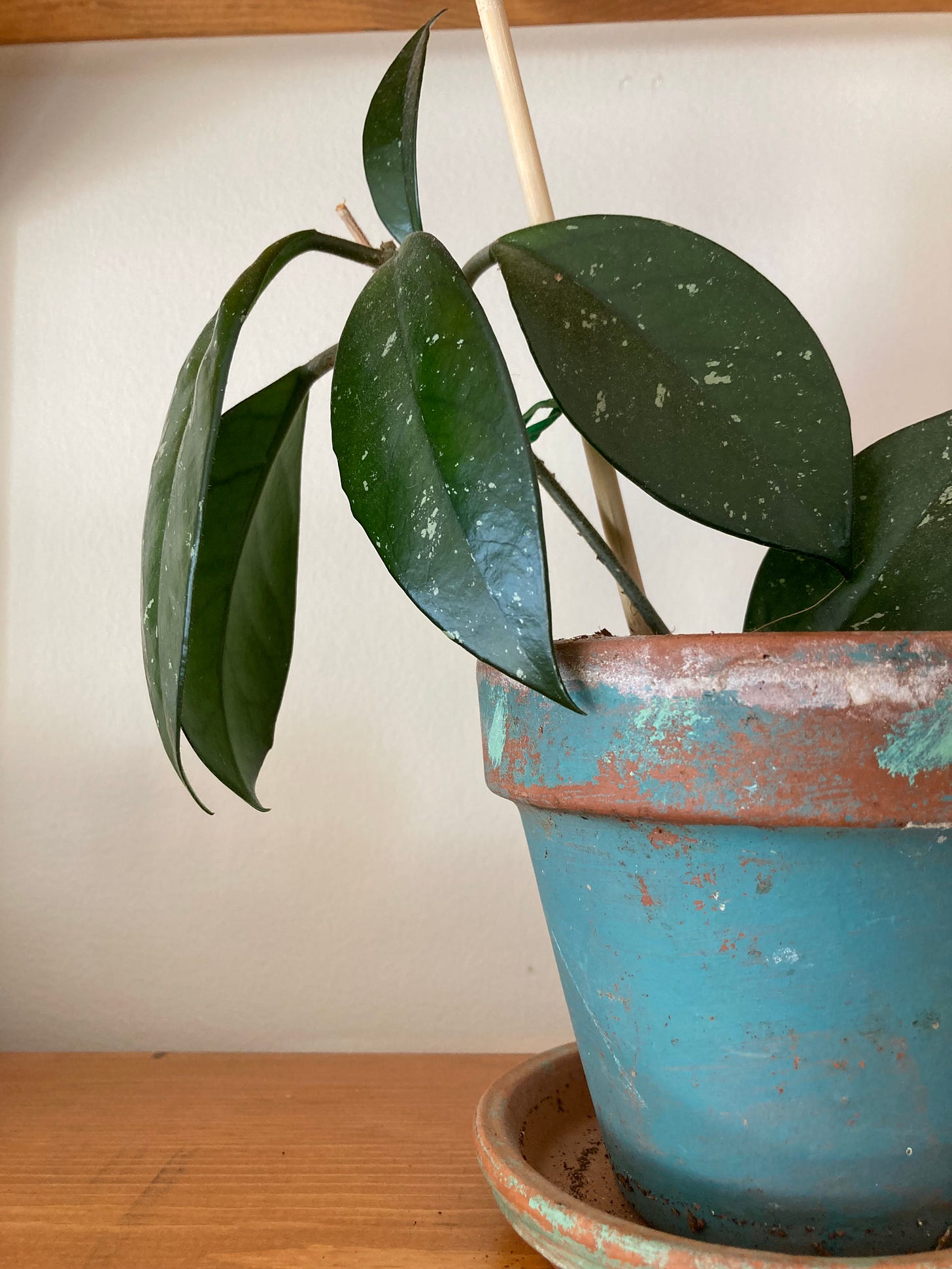The grief beneath the rage and fear; the love beneath the grief
and five things I'm doing to keep getting out of bed each day
It was -39 degrees Fahrenheit when we woke up one morning this week. I didn’t scroll down to see the windchill. Reluctantly opening her eyes, our eleven-year-old muttered, “Why do people have to wake up?”
We wake up to live life, I told her. We wake up because we are here, and we find ourselves in a new day. Here’s what you do, though: you layer up. You wear wool socks and lined boots, scarves, insulated mittens, hats (toques if you’re feeling Canadian). You work with blankets on your lap and drink a lot of tea. You put on another sweater. You get up and keep living your life, even in a week when the daily high never promises to creep above zero Fahrenheit. You have to keep living your life.
This is not a metaphor. It is also, of course, a metaphor.
These are wildly overwhelming times: so much is happening as the incoming US administration seeks, as they say, to flood the zone. It’s happening too fast for us to take it all in, much less all the excellent commentary and advice. Some people I love think a swamp is being drained somewhere; other people I love think they don’t have time for politics at all. But many more people I love are deeply terrified, horrified, watching a constitutional crisis, watching tariffs threaten to tank economies, watching medical treatments and research grind to a halt, watching food relief rot on trucks, watching hard-earned environmental and consumer protections disappear, watching their jobs evaporate in a “DEI” witch hunt, watching their right to exist as a trans person (and their safety, however relative) be suddenly revoked, watching a billionaire who could solve a majority of the nation’s problems by paying fair taxes and wages to workers instead cut middle-class jobs and humane social assistance, watching self-avowed Christians cheer on cruelty.
Deep breath.
Where to begin? How to keep going? How to keep bearing witness and struggling against the onset of a new tyranny? It’s enough to make a person want to stay in bed … indefinitely. I feel the urgency everywhere in my body like an achy buzz of dread. Sometimes it crops up as an out-of-proportion anger against someone I love. Sometimes it feels like a scream stuck in the middle of my throat.
I have been finding some help in a post-it note of wisdom Julia Turshen shared her “therapy greatest hits” a few months ago: an invitation, when I’m feeling angry or afraid or otherwise off-kilter, to pause and ask, “Maybe it’s grief?”
When I ask myself the question, I feel a softening. I feel the tears rise, even if they won’t quite spill over. I feel the truth of it: so much of my anger, my fear, my stress, my bewildered frozenness, is a thin layer protecting the tenderness that lies below it. The tenderness is my heart. The tenderness is my grief: for everything lost, everything still to lose, every ideal newly jaded, every tentative trust broken, every neighbour harmed—especially every neighbour harmed.
This morning it occurred to me that I still had another question to ask. I felt my way to the grief and welcomed it, then asked it, What’s beneath and behind you even further? What do you protect?
The answer rose up in me, immediately, with a startling clarity, like the sun sometimes shocks you on a forty-below day: love.
Beneath my anger and fear and bewildered overwhelm is grief. And beneath my grief is love—
—love for my trans kin; love for my intersex kin; love for my Black kin and my Brown kin and my Indigenous kin; love for women, for children, for my disabled kin; love for immigrants (whatever their status); love for refugees; love for working people who can’t afford to put food on the table; love for not-working people who are maligned with stereotypes built of lies; love for my unhoused kin; love for all the white men in my life who are trying to live with fairness and kindness instead of lording power over others; love for my Canadian friends doing their best to buy Canadian-made these days; love for my international students unsure of their global futures; love for all the children of the world who need a livable climate to have any kind of future; love for Ukrainians seeking to stay afloat in their embattled lives; love for Palestinians who love their homeland with a rootedness that we could all learn from.
Also love for the air, for the soil, for the plants, for the water, for the animals, all increasingly under threat; love for the Church that has lost its way from the path of Jesus’s clear command to love our neighbor with a love that relinquishes power; love for truth and beauty, for free inquiry and the arts; love for the ideals of liberty and justice for all.
Love for country? I’m not sure. If I can love my country, it’s only the way Simone Weil could love a France that had capitulated to Nazi control—with a “pity” that recognized both the specific beauty of the place and people and the specific mistakes that had led to its collaboration with gross injustice. Weil calls this stance patriotism as compassion, and I’ve been working on an essay about this idea that I hope to share soon.
In the meantime, I am trying to sit with my grief, and the grief around me, and let it be what it is instead of hiding it beneath some safer-feeling veneer. And I’m trying to honour the love that my grief has arisen from, because it is honourable and true, and to ground myself in this love and return my vision to this love and empower my creative nonviolent action with this love.
How about you: are you feeling grief? Are you rooting yourself in the love that undergirds it? Are you letting it move you to action? What does that action look like?
Five Things I’m Doing
The internet is full of lists of what to do and how to be right now. If you already have these resources at your fingertips, you can ignore mine below. But on the chance that you haven’t already collated a set of practices and sources of information, here are a few that I can offer:
I am trying to take in a reasonable amount of information every day or two or three, along with solid breaks from news—our attention is too precious to let it be coopted by a firehose of chaos. Importantly, I’m trying to take in both the terrible news and the good news, because the good news is how we sustain hope. I’m also trying to share this news—to amplify truth-telling—because that’s an essential piece of correcting misinformation.
Heather Cox Richardson’s Letters from an American offers a near nightly summary of urgent US news that she often links to history.
Rebecca Solnit, whom I follow on social media, has also just started a newsletter called Meditations in an Emergency. Solnit shares updates about news and also calls to action and links to good information, and I’ve admired her stance on hope as an “embrace of the unknown” for a long time. I also appreciate that, against the terrifying narrative that “no one is doing anything,” Solnit shares a lot of news about the resistance that IS happening.
Similarly, Kristin Du Mez’s post on Why Isn’t Anyone Doing Anything reminds us that they are, and you find them when you do things, too. As a historian focused on American Christianity, Du Mez is also a clear-eyed analyst of everything that’s going on.
Diana Butler Bass on good news in faith-led resistance and Pope Francis’s letter to US Bishops reminds us that there are religious leaders speaking out in the name of Christ’s compassion.
As an American citizen (even an expat one), I am trying to regularly call my representatives to let them know how concerned I am. To be honest, I find this really hard, but as much as I’d prefer letters and emails, phone calls are what count. The 5 calls website makes these calls as easy as possible.
I am leaning into the work that is mine to do, following Ayana Elizabeth Johnson’s advice about climate activism (I also love her newsletter). For me, this means showing up with clarity to my work empowering critical thinking, empathic curiosity, and action for love-as-justice—as a teacher, researcher, writer, graduate supervisor, and (new) director of a fledgling center focused on faith, reason, peace, and justice. It also means writing this newsletter.
I am seeking, in the words of Rabbi Danya Ruttenberg, to Fortify Inside (I also love her essay On Organizing, which is a reminder that we don’t just do one or the other)—to engage in spiritual and creative practices that sustain, to embrace delight and even joy, which the writer Ross Gay reminds us can be a site of radical communion. For me, this looks like board games with my kids; morning prayer; working on my Ohio Star quilt; wobbly watercolour painting; reading and writing poetry; and heart-opening conversations with friends near and far.
I am seeding the world with kindness in my everyday encounters with even more intentionality than usual: holding doors, greeting neighbors, letting cars merge ahead of me, smiling at strangers, sending treats for school staff, offering grace to my harried students, chatting with grocery checkout workers and the phlebotomist who takes my blood. In every encounter with a human, I am trying to treat them as a human, not a service-provider, a competitor, or an inconvenience. Plenty of research shows that these small acts of daily kindness build cultures of civility—they matter. On this point, I also really loved Courtney Martin’s essay on Grace and Proportionality in Polycrisis.
Everything may be falling to pieces, and sometimes we probably just need a day in bed (I did a few weeks ago, felled by a stomach bug and probably stress, too). But once we can, we get up again and keep living, because we are here, and the only way through is with each other.






Thank you for this.
Cindy, I can't say much more than... write on!
Yes, a bit of a pun, but there's truly a powerful element in your writing that reaches an effective depth my media intake of late needs an antidote for. Thank you for bringing deeply thought out compassion to the surface of my nerves where such a balance and balm is so needed .
Love, dad